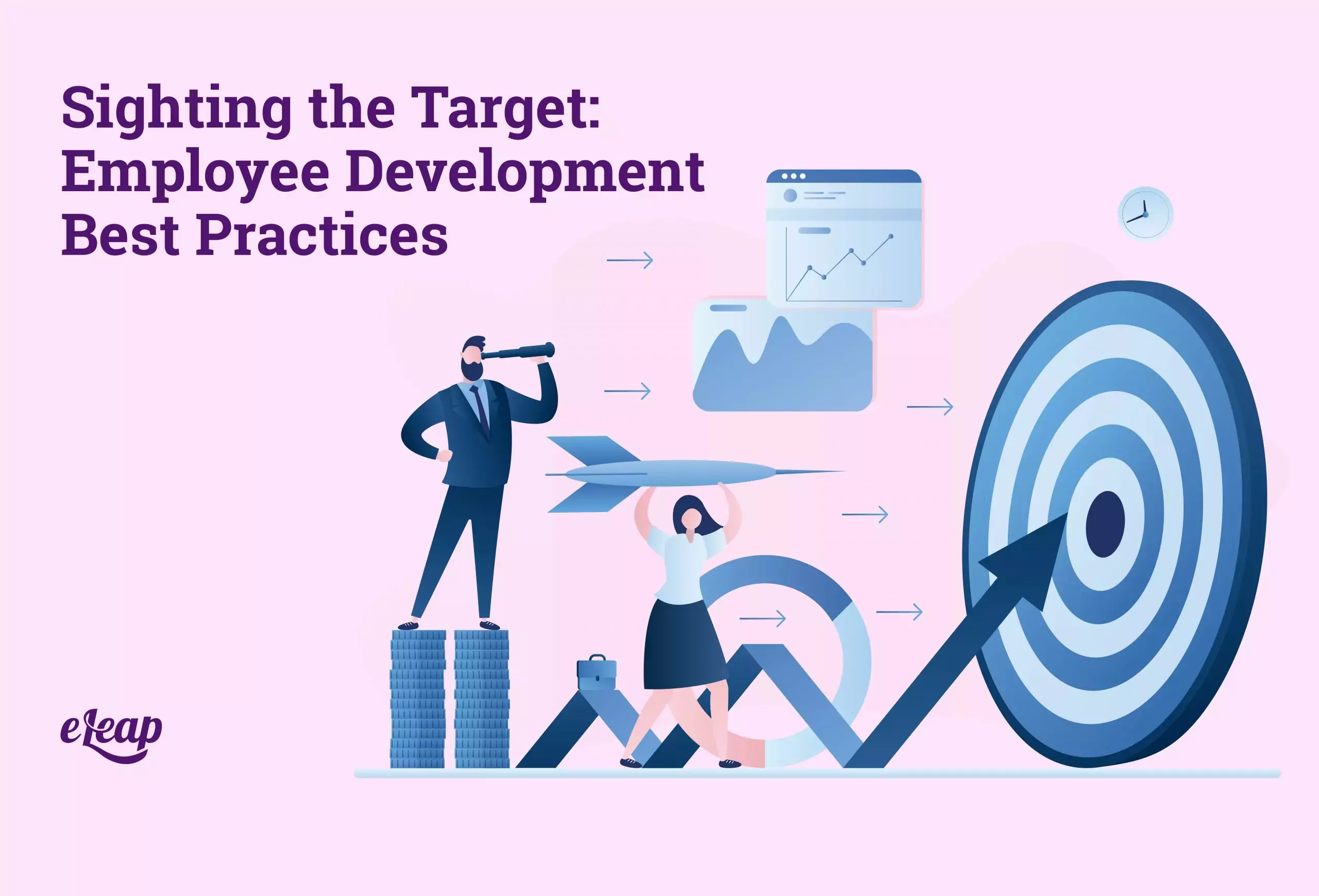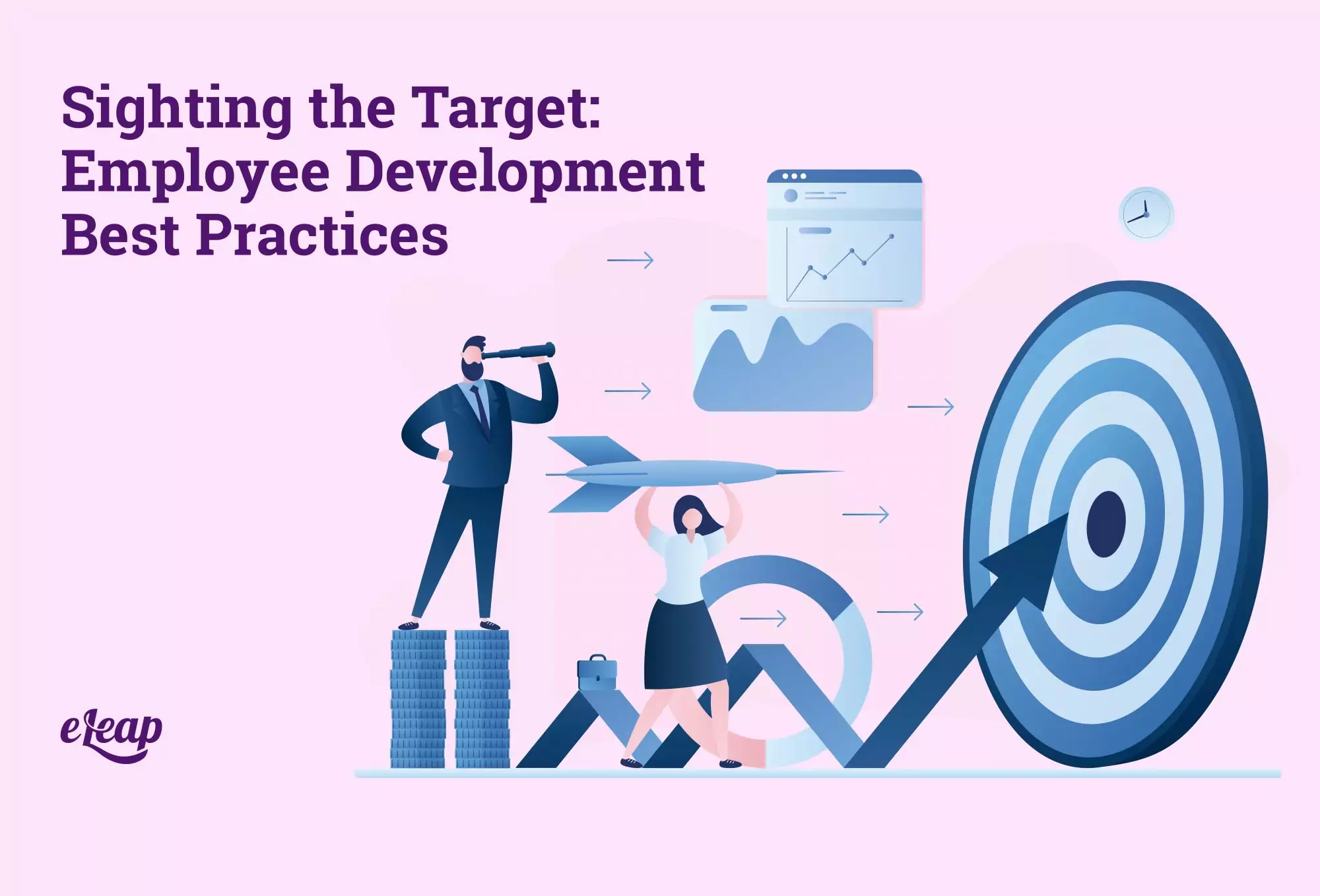Sighting the Target: Employee Development Best Practices

What is the key to running a successful organization? The right product? Great marketing? A thorough understanding of your competitors? Those are important, certainly, but they are not the most critical thing. That title goes to your employees.
Without human talent, your organization does not exist. It’s as simple as that. When seen in this light, the need to help your team members grow and develop becomes obvious. However, it does not make it any less challenging.
Many decision-makers and leaders struggle when it comes to employee development. The good news is that simply following a few best practices can help. Not only will these best practices ensure that you’re able to build your people up, but it can also enable critical capabilities and advantages for the business.

Why Invest in Employee Development?
Before we delve too far into employee development best practices, let us take a look at the business case for development in the first place. In other words, what’s in it for you? You’ll find a host of different yet compelling reasons, including the following:
- Increased ability to compete on level footing
- The ability to close skill gaps and deal with skill shortages
- Building the talent necessary for modern workplaces
- Adapting to industry changes
- Increasing employee engagement
- Driving improved employee productivity
- Addressing efficiency challenges
- Reducing employee churn and all related costs
- Aligning development with the organization’s goals
These are just a few of the reasons that leaders choose to embark on employee development initiatives and invest in learning management systems capable of providing training at the speed of modern business. Of course, understanding why development is important is just part of the equation. Successfully delivering training that simultaneously supports learner goals and builds employee engagement while driving the organization forward is also vital.
Best Practices to Guide Employee Development
Ultimately, whether you’re an SMB or an enterprise-level organization, you must create an employee development plan that fits both the needs of your people and the goals of your organization. The following best practices will help you achieve that goal. Also download the free Skeptics Guide to Employee Development eBook
1. Focus on Your Culture First
Before doing anything else, you must ensure that learning and development are baked into your corporate culture. If your culture denigrates learning or sees employee development as an unnecessary luxury, all your efforts will be for nothing. So, how do you begin building that learning-focused mindset?
One step is to use performance reviews to engage and teach the importance of learning and development. They are, after all, two sides of the same coin. In your performance reviews, tie key takeaways to learning initiatives. Help your employees connect the dots between areas that may need improvement with the tools to do just that. In other words, build your performance reviews around learning and development goals.
2. Make It Personal
In the past, learning and development took a one-size-fits-all approach. You can no longer afford to do that. Not only does an impersonal approach to L&D create a disconnect with your learners, but it can also backfire, making your learners less likely to value your initiatives. Instead, create personalized training and development plans that fit each employee like the proverbial glove.
Personalizing learning and development can be pretty challenging, but it can be accomplished with a little effort. It does require that you understand the various factors that must go into creating such a plan. These include:
- Mandatory Training: This includes things that apply to every employee, such as diversity training.
- CE: Many credentialed employees are required to complete continuing education to maintain their certification.
- Career Trajectory: You must look beyond the employee’s current role and the skills they need to perform their job duties. What are their aspirations? Where do they want to go in terms of their career?
4. Deliver in Multiple Formats
To engage employees in learning and development content, it’s important to deliver it in the right format. Understand that your learners have different needs, expectations, preferences, and aptitudes. It is important to deliver L&D material in different formats to fit those metrics, including:
- Interactive webinars
- Recorded, digitally-delivered lectures
- Text-based content
- Interactive digital content
- Gamified content
The right mix of formats supports engagement and helps ensure that learners can ingest, digest, and retain information.
5. On the Go and On-Demand
Once upon a time, most training took place in HR. Today, though, on-premises training is declining. The pandemic is only partially responsible for that. Shifts in employee expectations, job roles, and technology also play their part.
What this means for organizations is that in order to encourage employee development, you must deliver content that’s accessible on many different screen sizes, and even when employees are on the go. Employees might start a module on a PC but then shift to a lightweight laptop, then to a tablet computer, or even a smartphone. Your content must be able to fit the screen size in question, but also the connectivity technology (4G versus gigabit Internet, for instance).
6. Secure Executive Buy-In and Lead from the Top Down
There’s a notion that learning and development is something that only applies to employees and not to managers or leaders. In some respects, this is tied to culture, so positive changes that help you create a learning-focused mindset will begin to change things. However, it is important for organizations to get executive buy-in on the importance of L&D initiatives, and that you lead by example (from the top down).
Leaders and managers should do more than merely preach the importance of L&D. They need to walk the walk in addition to talking the talk – otherwise, your message is hollow and employees will see through it.
Putting It All Together
The six best practices above will help ensure that you’re able to engage your employees in relevant, valuable L&D material. Remember – it’s about more than building skills important for the business. Learning and development must be relevant to your employees, both right now, and as they advance their careers.